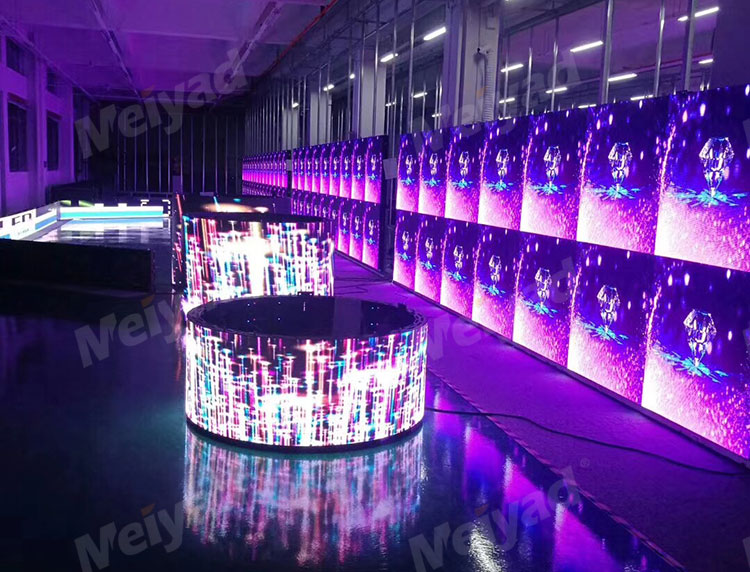+86 135 3053 5995
sales@mydled.comWe use our own and third-party cookies to ensure the proper functioning of the web portal and its complements, perform navigation analysis and show multimedia content. If you continue browsing, you accept the use of this technology. For more information please see our Cookies Policy. Learn more
As the saying goes, dilettante watch the scene of bustle, expert looks at the way. A variety of LED display screens for customers to choose dazzling, then how should we distinguish the quality of LED display? As a manufacturer, Meiyad has proposed a set of suggestions for customer selecting high-quality LED displays.
In terms of performance parameters, the so-called high quality of LED display also means that the LED display has high gray scale, high refresh rate, high utilization and other characteristics. Here are some features of the LED display:

The gray scale of the LED display is also called the gradation or gray scale, which refers to the intensity of brightness. For LED digitized display technology, gray scale is the determining factor of display colours. In general, the higher the gray level, the richer the displayed color, the finer the picture, and the more detailed it shows.
The high refresh rate means that the electron beam repeatedly scans the image on the screen with a higher number of times. The higher the refresh rate, the better the stability of the displayed image (picture). The refresh rate will directly determine its price, but since the refresh rate and resolution are mutually constrained, only LED displays that achieve a high refresh rate at high resolution can be called excellent performance. At present, the refresh rate of ordinary LED display screens on the market is about 800HZ to 1500HZ, and over 4000HZ is the high refresh rate.
The high utilization of LED means that the required brightness can be achieved without using the power LED, and the energy consumption of the LED display can also be reduced. At present, various LED display manufacturers have produced LED displays of different shapes, with spherical LED display, column led display, arc type and angle LED display, which will be more efficient in space utilization and presentation form, which also means a wider range of applications.
From the perspective of visual effects, choosing a good LED display can start from the following three aspects:
1. White balance effect. The white balance effect is one of the most important indicators of the LED display. In color theory, when the ratio of red, green and blue primary colors is 1:4.6:0.6, pure white will be displayed. If there is a slight deviation in the actual ratio, the deviation of white balance will appear. Generally, it should be noted whether white has the phenomenon of blue or yellow green. The quality of the white balance is mainly determined by the control system of the LED display, and the tube core also has an effect on the color reproduction.
2. Brightness and viewing angle. The brightness of the indoor full color LED screen should be above 800cd/sqm, and the brightness of the outdoor full color LED screen should be above 1500cd/sqm to ensure the normal operation of the LED display. Otherwise, the displayed image will not be seen because the brightness is too low. The brightness is mainly determined by the quality of the LED tube core.
3. The surface flatness of the LED display should be within ±1mm to ensure that the displayed image is not distorted. Local bumps or recesses may cause a blind angle in the viewing angle of the LED display. The quality of the flatness is mainly determined by the production process.